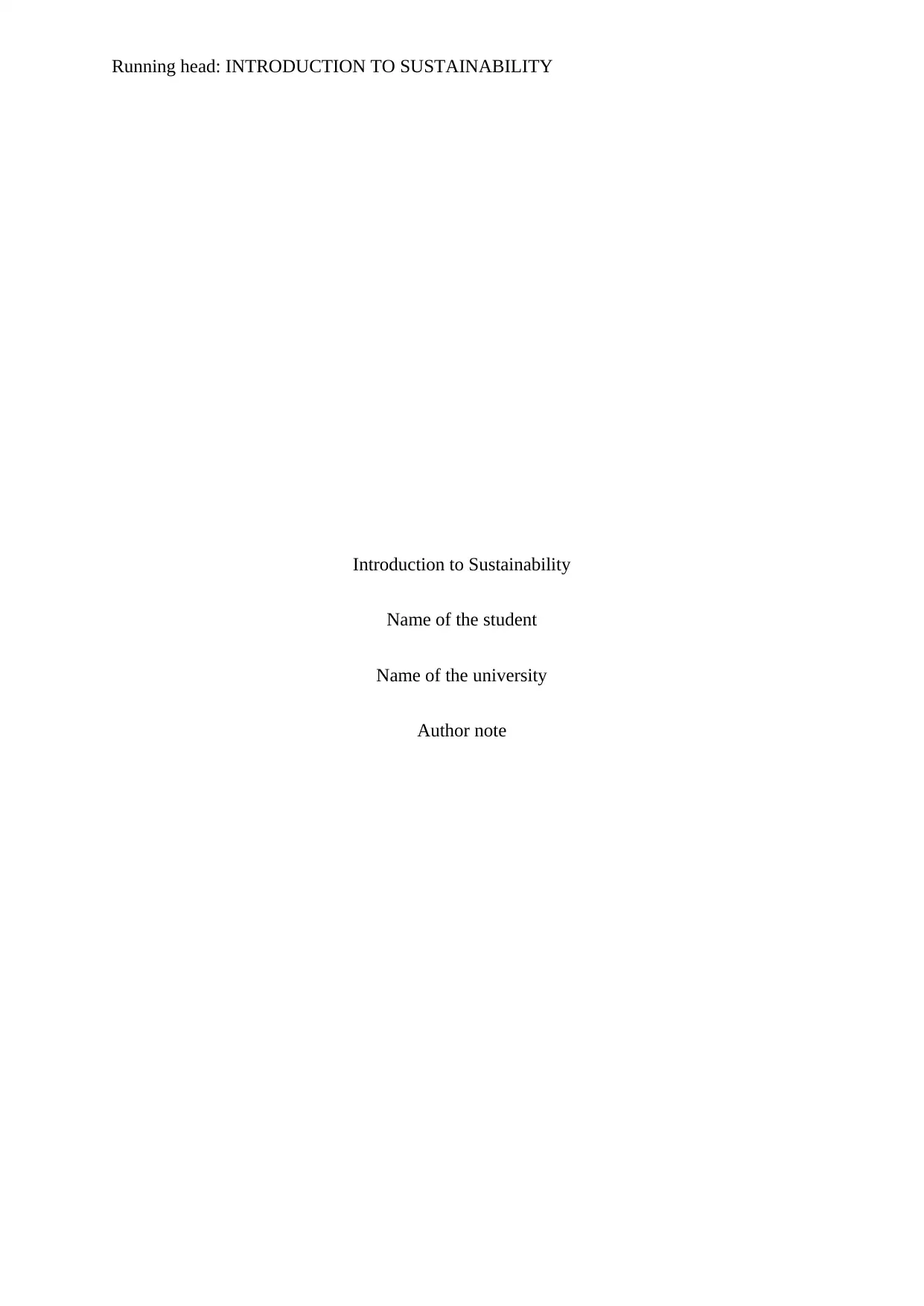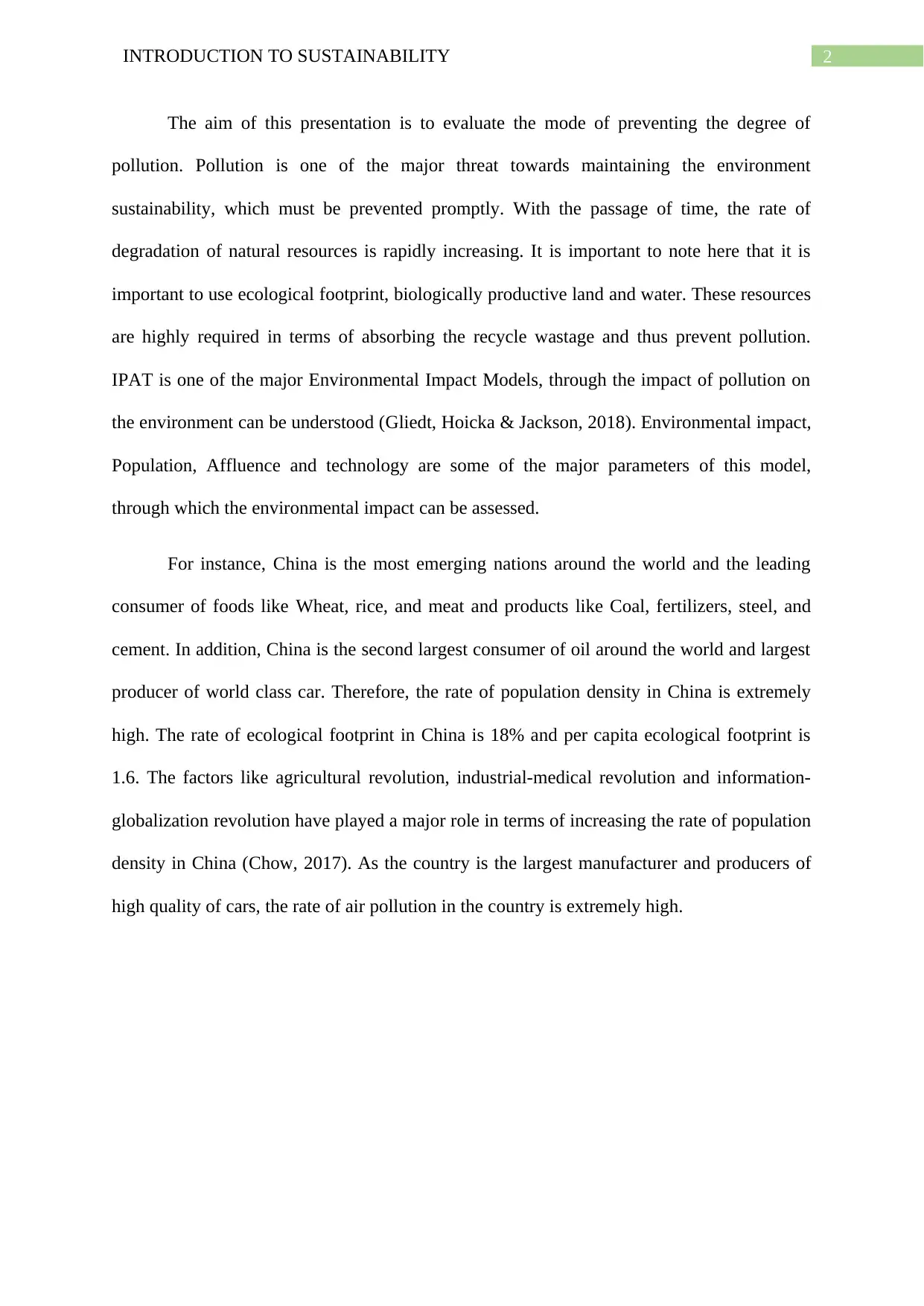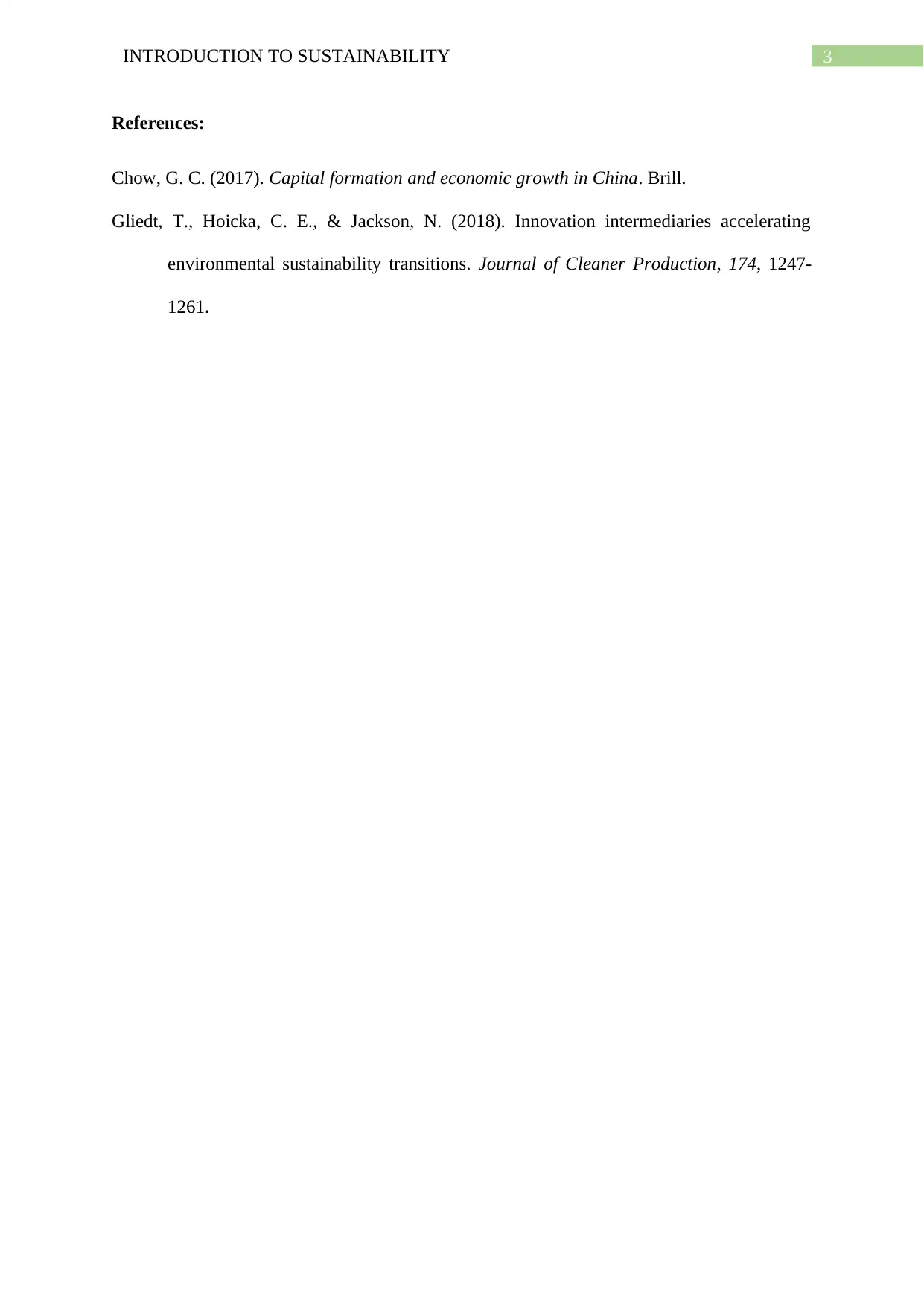University Presentation: Introduction to Sustainability and Pollution
VerifiedAdded on 2022/08/20
|3
|379
|12
Presentation
AI Summary
This presentation provides an introduction to the concept of sustainability, emphasizing the critical need to prevent pollution and protect the environment. It highlights the increasing degradation of natural resources and the importance of utilizing ecological footprints and biologically productive land and water to manage waste and mitigate pollution. The presentation introduces the IPAT model, which assesses environmental impact through factors such as population, affluence, and technology, using China as a case study. China's high population density, industrial growth, and consumption patterns lead to significant environmental challenges, including high rates of air pollution. The presentation references relevant research on sustainability and innovation in environmental management, providing a comprehensive overview of the topic.
1 out of 3










![[object Object]](/_next/static/media/star-bottom.7253800d.svg)